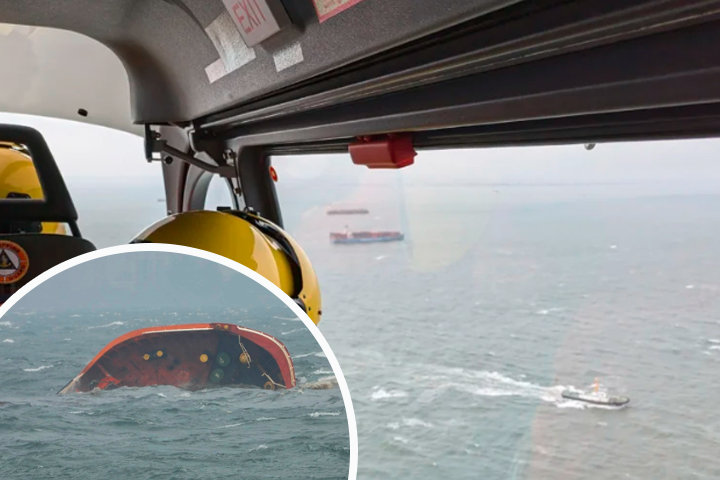


MANILA, Philippines—A Philippine oil tanker collapsed in Manila Bay early on Thursday due to strong waves, killing one crew member and saving 16 others in a coast guard operation that took place late at night. Additionally, the military was evaluating if the ship was leaking oil, which might cause a significant spill and reach the busy metropolis.
When the ship Terra Nova was battered by enormous waves and began to take on water, it was carrying around 1.4 million liters (370,000 gallons) of industrial fuel oil in waterproof tanks when it departed Bataan Province toward the province of Iloilo in the center. Rear Adm. Armando Balilo, a spokesman for the coast guard, stated that the crew fought to bring the tanker back to port until it sank just after midnight, citing accounts from crew members who survived.
After many days of monsoon rains, made worse by an approaching offshore typhoon, which caused landslides and floods throughout the archipelago and resulted in the deaths of at least 22 people and the displacement of over 500,000 people, the sinking occurred.
Aerial surveyors saw an oil slick of 3.7 kilometers (2.3 miles) in length close to the choppy waters where the tanker sank. However, Mr. Balilo speculated that the oil slick may have originated from the gasoline used in the ship's engine rather than the oil cargo the Terra Nova was transporting.
According to Mr. Balilo during an online news conference, the BRP Melchora Aquino, a coast guard ship, was in the waters where the tanker sank, more than 6 kilometers (about 4 miles) from the coast of Bataan Province, to search for the last missing crewman, whose body was later recovered from the waters, and to conduct an initial assessment of the tanker's fuel oil cargo.
He added that the coast guard was bracing to contain a possible major oil spill.
“There’s a big danger that Manila would be affected, its shorelines, if the fuel leaks because this happened within Manila Bay. It’s part of the contingency we’re preparing for,” Mr. Balilo said. “We are racing against time and we will try to do our best to contain the fuel so it will no longer leak out.”
Mr. Balilo later said the oil tanker sank at a relatively shallow depth of 34 meters (111 feet), based on an initial assessment, and raised the possibility that its fuel oil cargo could be siphoned off by special ships in a delicate operation that could take about a week.
“Siphoning will not be very technical and can be done quickly to protect the vicinity waters of Bataan and Manila Bay against environmental, social, economic, financial and political impacts,” Mr. Balilo said.
He did not state if the 65-meter (213-foot) ship had been found on the ocean floor or what had become of its fuel oil load.
Mr. Balilo likened the extent of the potential oil spill to the one that occurred in February of last year off the coast of Oriental Mindoro Province, north of Manila, when another Philippine oil tanker sank while carrying a far smaller load of fuel oil. The leak harmed tens of thousands of fisherman and beach resorts in at least six provinces, took around three months to contain, and severely damaged coral reefs and mangroves in an area renowned for its rich biodiversity.
Manila's waterfront, which includes the city's principal harbor, a historically significant public park, the U.S. There is an embassy, fine dining establishments, hotels, and sizable retail centers. In the bay, there are also plans to reclaim land in order to make room for casinos and other tourist and entertainment buildings. The bay is well-known for its gorgeous sunsets but has long been infamous for its pollution.
The previous significant oil spill required extensive cleanup and reconstruction, for which the United States and Japan provided assistance to the Philippines.